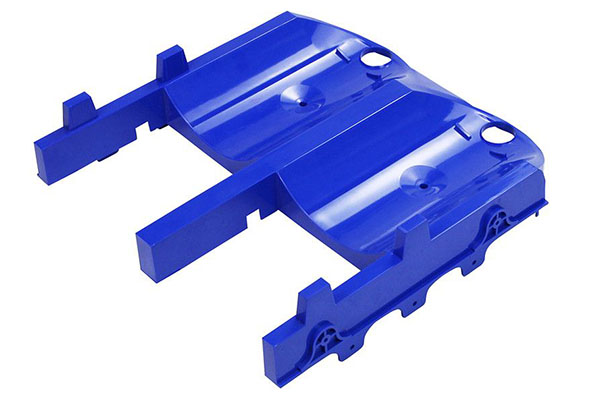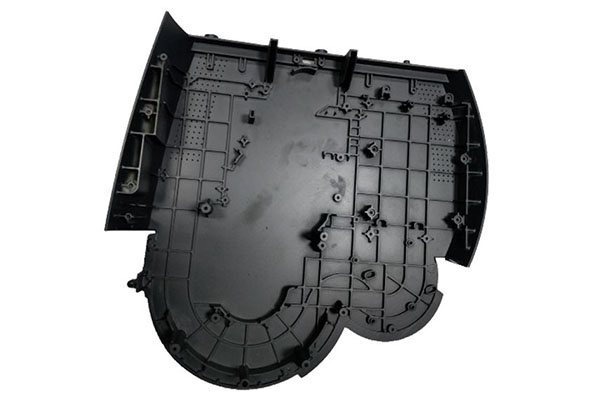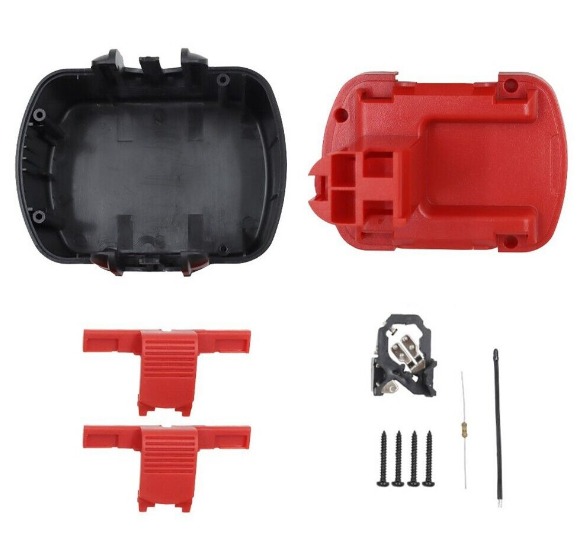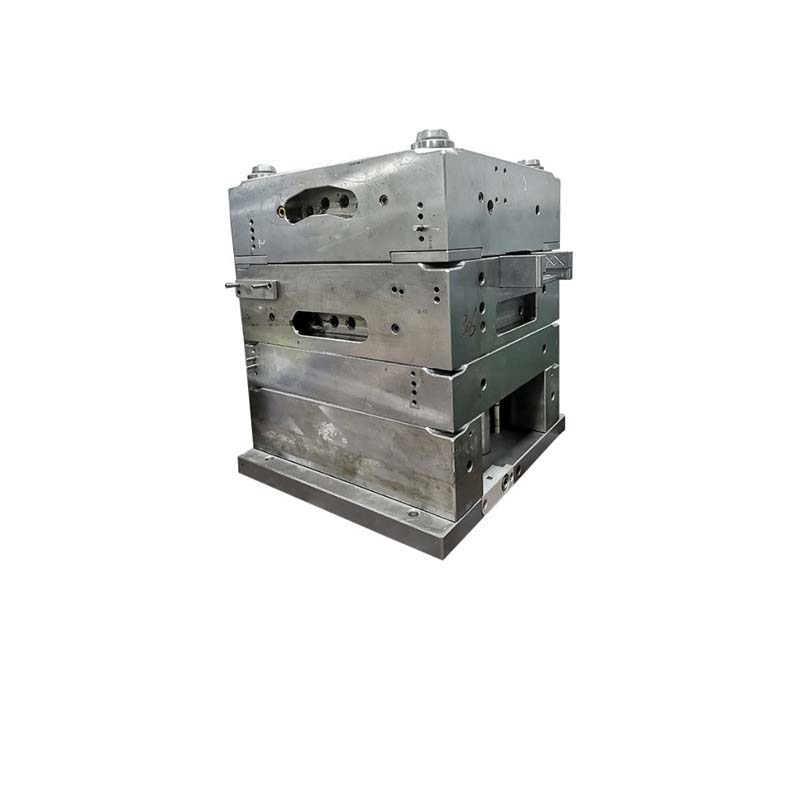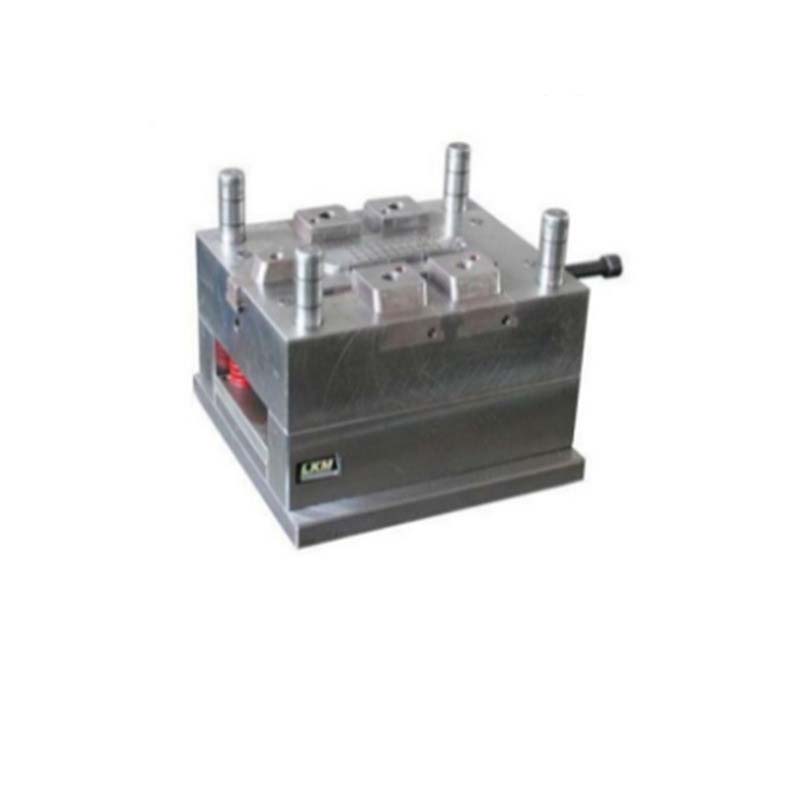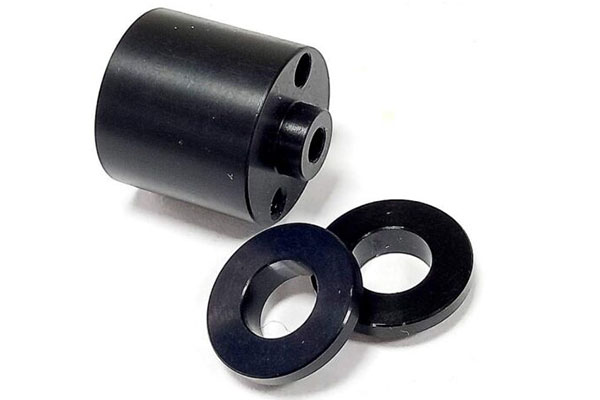Introduction
The Importance of Plastic Parts in Modern Industry
Plastic parts have become an integral part of modern industry, infiltrating nearly every sector we can think of. In the automotive industry, for example, plastic parts are used in various components such as dashboards, bumpers, and interior trims. They help in reducing the vehicle's weight, which in turn improves fuel efficiency. According to a study by the Society of Plastics Engineers, the average vehicle today contains around 300 pounds of plastic parts, and this number is expected to grow as automakers strive for greater fuel economy and lighter vehicle designs.
In the electronics field, plastic parts are widely used in the manufacturing of device casings, circuit board components, and connectors. Their excellent insulating properties, lightweight nature, and ease of molding make them ideal for this industry. For instance, smartphones are almost entirely encased in plastic, with plastic components also being used for internal parts like battery holders and speaker grilles. In the medical industry, plastic parts are used in a vast array of applications, from syringes and IV tubing to complex medical device housings. They are often chosen for their biocompatibility, low cost, and sterilizability.
Given the extensive use of plastic parts across industries, the importance of high - quality plastic molds cannot be overstated. Molds are the key to producing plastic parts with precision, consistency, and in large quantities. They determine the final shape, size, and surface finish of the plastic parts, making them a crucial factor in the manufacturing process.
Types of Molds for Plastic Parts
Injection Molds
Injection molds are the most widely used type of molds in the plastic manufacturing industry. Their popularity stems from their ability to produce plastic parts with high precision and complex geometries. The working principle of injection molds is as follows: plastic pellets are first fed into the heating barrel of an injection molding machine. Here, they are heated until they reach a molten state. The molten plastic is then forced, under high pressure, through a nozzle and into the closed mold cavity. Once the cavity is filled, the plastic is allowed to cool and solidify. After that, the mold opens, and the newly formed plastic part is ejected.
One of the significant advantages of injection molds is their high - precision capabilities. They can produce parts with tight tolerances, often within ±0.05mm or even smaller in some advanced applications. This makes them ideal for industries like electronics, where components need to fit together precisely. For example, in the production of connectors for printed circuit boards, injection - molded plastic parts ensure a perfect fit with other electronic components. Another advantage is their efficiency in mass production. High - speed injection molding machines can produce hundreds or even thousands of parts per hour, reducing the per - unit production cost significantly when manufacturing large quantities.
Compression Molds
Compression molds are mainly used for the processing of thermosetting plastics. The process begins with placing a pre - measured amount of raw plastic material, which can be in the form of powder, pellets, or pre - formed shapes, into the open mold cavity. The mold is then closed, and heat and pressure are applied simultaneously. As the heat and pressure increase, the plastic softens and flows to fill the entire mold cavity. During this process, a chemical reaction occurs in the thermosetting plastic, causing it to cross - link and harden permanently. Once the plastic has fully cured, the mold is opened, and the finished part is removed.
Compared to injection molds, compression molds are better suited for producing large, simple - shaped parts. Since the plastic in compression molding is already in the mold cavity before the application of pressure, it is less likely to cause issues related to the flow of plastic over long distances or into complex geometries. However, they are not as effective as injection molds when it comes to producing parts with intricate details. The production cycle of compression molding is generally longer than that of injection molding. This is because the heating and curing process in compression molding often requires more time. But compression molds can be a more cost - effective option for medium - to - low - volume production runs, as the molds themselves are relatively simpler and less expensive to manufacture.
Blow Molds
Blow molds are designed specifically for creating hollow plastic products such as bottles, containers, and toys. There are two main types of blow molding processes: extrusion blow molding and injection blow molding.
In extrusion blow molding, a continuous tube of molten plastic, known as a parison, is first extruded. This parison is then placed inside a split mold. Once the mold is closed, compressed air is injected into the parison, causing it to expand and conform to the shape of the mold cavity. After cooling, the mold opens, and the hollow plastic product is removed. This method is commonly used for producing large - volume hollow products like industrial drums and large - capacity water bottles.
In injection blow molding, the process starts with injecting molten plastic into a mold to form a pre - form, which is a small, partially - formed plastic piece. The pre - form is then transferred to a blow - molding station. Here, it is reheated and inflated with compressed air inside a second mold to achieve the final shape. Injection blow molding is often used for producing small, high - precision hollow products such as beverage bottles and cosmetic containers. Blow - molded products are widely used in the packaging industry due to their lightweight, cost - effectiveness, and excellent barrier properties against moisture and gases.
The Process of Making Molds for Plastic Parts
Step 1: Design and Planning
The first and most crucial step in making molds for plastic parts is the design and planning phase. This stage involves using advanced Computer - Aided Design (CAD) and Computer - Aided Manufacturing (CAM) technologies. CAD software allows designers to create highly detailed 3D models of the plastic part and the corresponding mold. For example, in the design of a complex plastic housing for a consumer electronics device, CAD software enables the designer to accurately define all the intricate features such as screw holes, snap - fits, and internal ribs.
By using CAD, potential design flaws can be identified and corrected in the virtual environment before any physical manufacturing begins. This significantly reduces the time and cost associated with rework later in the process. Once the 3D model is created in CAD, it can be imported into CAM software. CAM software then generates the toolpaths and instructions for the manufacturing equipment, guiding the machines on how to cut, shape, and drill the mold components precisely.
A real - world example of the importance of this step is a case where a company was developing a new line of automotive interior plastic parts. By spending sufficient time in the design and planning phase, they were able to optimize the mold design to reduce the number of parts and simplify the manufacturing process. This not only saved on material costs but also increased the production efficiency, resulting in a 20% reduction in the overall production time for each part.
Step 2: Material Preparation
After the design is finalized, the next step is material preparation. The selection of the mold material, as mentioned earlier, is based on the requirements of the plastic part being produced. Once the material is chosen, it often requires some form of pre - treatment.
For steel mold materials, common pre - treatment methods include annealing. Annealing is a heat - treatment process where the steel is heated to a specific temperature and then slowly cooled. This process helps to relieve internal stresses in the steel, improve its machinability, and refine its grain structure. For example, if a mold is made from a block of steel that has been hot - rolled, annealing can make the steel more uniform and easier to machine, reducing the likelihood of tool breakage during the machining process.
Another pre - treatment method is quenching and tempering for certain types of steel. Quenching involves rapidly cooling the heated steel in a medium such as oil or water, which increases its hardness. However, quenched steel is often brittle, so tempering is carried out. Tempering is a process of reheating the quenched steel to a lower temperature and then cooling it again. This helps to reduce the brittleness of the quenched steel while retaining a significant amount of its hardness, making it suitable for use in mold - making where a balance of hardness and toughness is required.
Step 3: Machining and Manufacturing
The machining and manufacturing step is where the physical mold is created from the prepared material. Computer - Numerical - Control (CNC) machining is a primary method used in this stage. CNC machines can perform a variety of operations such as milling, turning, drilling, and grinding with high precision.
For instance, in the milling process, a rotating cutting tool removes material from the mold block to create the desired shape of the mold cavity or core. The CNC machine follows the precise instructions generated by the CAM software, ensuring that the dimensions of the mold components are within the required tolerances. In a high - precision mold for producing optical lenses, the CNC milling process can achieve surface finishes as smooth as Ra 0.1μm, which is crucial for the optical performance of the plastic lenses.
In addition to traditional CNC machining, advanced manufacturing technologies such as Electrical - Discharge Machining (EDM) are also widely used, especially for molds with complex geometries. EDM is a non - traditional machining process that uses electrical discharges (sparks) to erode the material. This method is particularly useful for creating intricate details, sharp corners, and undercuts in the mold that are difficult to achieve with traditional machining methods. For example, in the production of a mold for a plastic toy with highly detailed internal features, EDM can accurately create these features without the need for complex multi - axis machining setups.
3D printing, also known as additive manufacturing, is emerging as an alternative manufacturing method for certain types of molds. It allows for the creation of molds with complex internal structures and geometries that would be extremely difficult or impossible to produce using traditional methods. 3D printing can also significantly reduce the lead time for mold production, especially for small - batch or custom - designed molds. For example, a company that needs a prototype mold for a new product can use 3D printing to quickly produce the mold in a matter of days, compared to weeks or months with traditional manufacturing methods.
Step 4: Assembly and Testing
Once all the individual mold components are machined, they need to be assembled into a complete mold. This process requires careful alignment and fastening of the components to ensure that the mold functions properly. During assembly, precision - measuring tools such as dial indicators and gauges are used to verify the alignment and fit of the components.
After assembly, the mold undergoes a series of rigorous tests. One of the primary tests is the pressure test. In an injection mold, for example, the mold is closed, and a high - pressure fluid (usually water or oil) is injected into the cavity to simulate the pressure exerted by the molten plastic during the injection molding process. This test helps to identify any leaks or weak points in the mold.
Another important test is the dimensional inspection. Coordinate - Measuring Machines (CMMs) are used to measure the dimensions of the mold cavity and other critical features. The measured dimensions are then compared to the original design specifications. If the dimensions are outside the allowable tolerances, the mold may need to be adjusted or re - machined.
In addition, functional tests are carried out. For a blow mold, the mold is tested with the actual blow - molding process using a sample plastic material. The resulting plastic product is then inspected for any defects such as uneven wall thickness, cracks, or improper shape.
If any issues are detected during the testing process, a detailed root - cause analysis is performed. Depending on the nature of the problem, solutions may range from simple adjustments, such as tightening bolts or realigning components, to more complex procedures like re - machining or replacing faulty parts. For example, if a leak is detected during the pressure test, the source of the leak is identified, and the corresponding seals or connections are repaired or replaced. Only after the mold passes all the tests can it be considered ready for mass production of plastic parts.
Yigu Technology's View
Yigu Technology, as a custom supplier of non - standard plastic metal products, understands the significance of precision and innovation in making molds for plastic parts. We focus on the entire process, from the initial design to the final production.
In terms of design, our team of experienced engineers uses advanced CAD/CAM software to create detailed and optimized mold designs. This allows us to simulate the molding process, identify potential issues, and make necessary adjustments before production begins. For example, we can analyze the plastic flow, temperature distribution, and stress concentration in the mold to ensure a high - quality end - product.
Material selection is another area where we excel. We have an in - depth understanding of various mold materials and their properties. Whether it's steel, aluminum, or other specialized materials, we can recommend the most suitable option based on the specific requirements of the plastic part, such as production volume, part complexity, and material characteristics.
Quality control is at the core of our operations. We have a strict quality management system in place, with multiple inspection points throughout the manufacturing process. From material inspection to dimensional checks of the mold components and final mold testing, we ensure that every mold meets the highest standards of quality and precision.
Moreover, we offer comprehensive after - sales service and technical support. Our team is always ready to assist customers with any questions or issues that may arise during the use of the molds, providing timely solutions to ensure smooth production. We believe that by combining our expertise, advanced technology, and commitment to quality, we can help our customers achieve their production goals efficiently and cost - effectively.
